Year: 2011
September 7, 2011

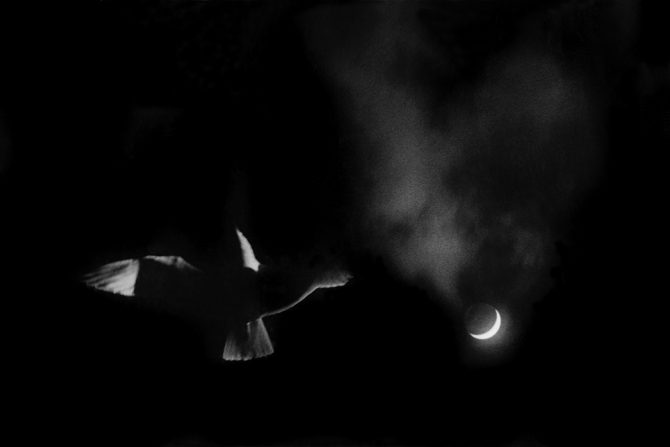
The quickest way to make money at photography is to sell your camera.
~ Anonymous
Cole
P.S. The image above was taken when I was 16 years old and living in Anaheim, CA.
August 16, 2011
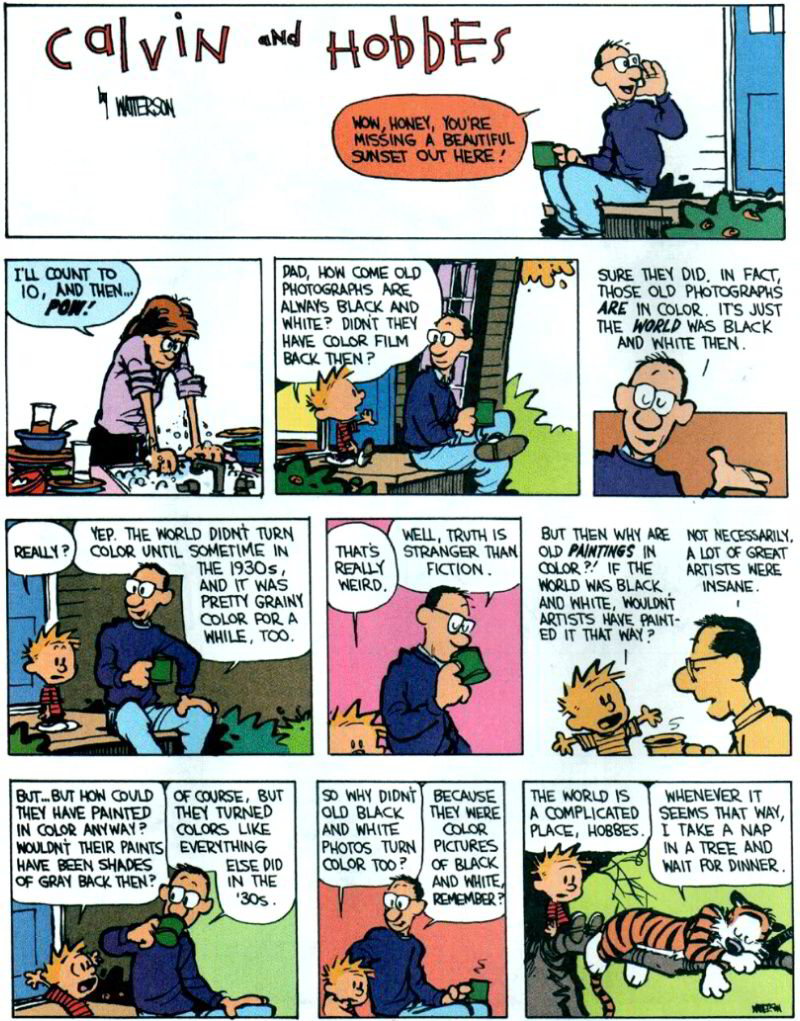


The truth about Black and White (according to Calvin and Hobbes).
http://www.reoiv.com/random.asp?img=dadbandwandcolour.jpg&page=2
Cole
P.S. Thanks to Ed Book for sending this to me.
August 4, 2011
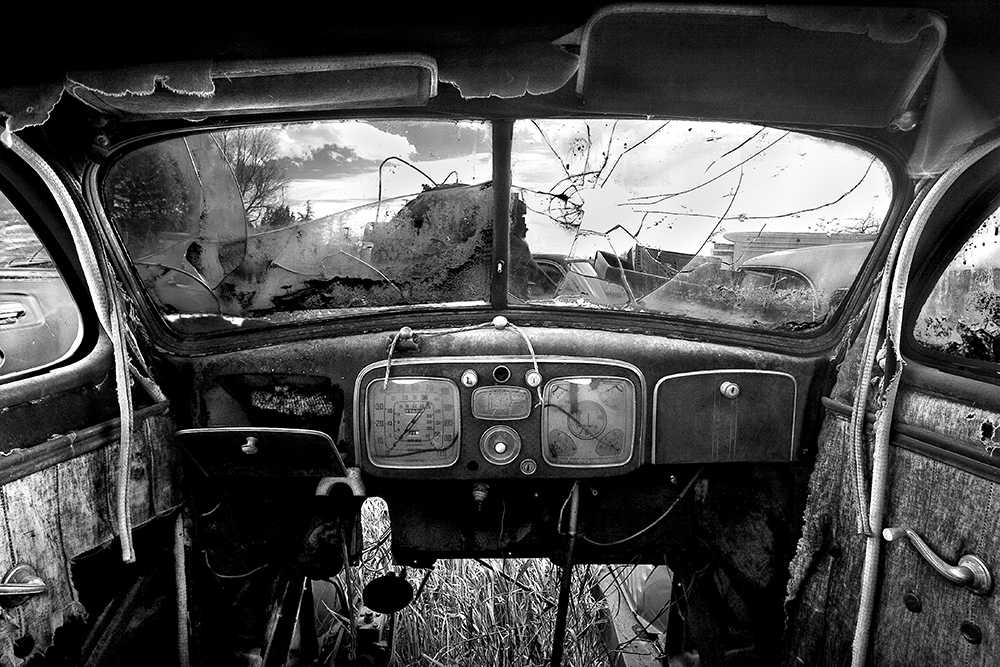
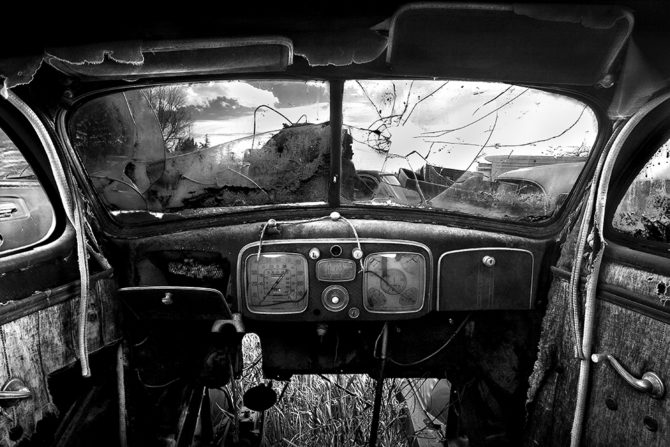
Are people using your images without your permission? It’s quite possible, I’ve found mine in books, on blogs, in news articles and even being used commercially on business websites. It was usually quite by chance that I’d find this out, perhaps because a friend would see my image and tell me about it. With the advent of Google Alerts I could find a few more, but this searches for key words and so it was pretty ineffective for unattributed uses of images. What’s really needed is a search engine for images and just today I learned that Google has given us such a tool!
But before I talk about how to search for images, you should first decide if you care if others use your images without permission. For example, many people reproduce my images on their blog without my permission, but they do give me full credit and provide my web address. This serves to introduce new people to my work and I really appreciate it. But I’ve also had an online news organization use my images in several of their stories, without permission or attribution, and I was not okay with that! It’s good to think about what unauthorized uses, if any, you’re okay with.
I’m pretty tolerant when it comes to unauthorized use if I’m given credit and my web address is provided. I’m not okay with unauthorized use if I don’t receive credit or my images are used in a commercial way. However others feel differently and do not want their images used in any way without permission. They insist that if you don’t protect the use of your images, you actually lose your image rights over time. If you’re concerned about this, please do some research or seek some legal council.
Once you’ve decided where you stand on this issue, the next step is to find out who might be using your images. Here’s how you do it:
1. Go to Google.com and click on “images” at the top left of the page.
2. On the right hand side of the search box there is a camera icon, click on this to search by providing an “image” instead of a “search phrase.”
3. Select “Upload an Image” to supply the photo you want to search for and then hit the search button. You’ll then be given search results showing you where on the Internet that image has appeared. Very cool!
It’s fascinating to explore these links and see where you images have appeared. Today in just 10 minutes I discovered that I had won 2nd place in a Russian photo competition (that I hadn’t even entered) and found an auto parts company using my “Old Car Interior” image without permission or attribution!
Google has provided a great tool that is perfect for photographers and artists. But as important as knowing where your images are, is knowing what your policy will be for unauthorized use.
My thanks to Harold Ross for teaching me about this new tool via his blog; http://haroldrossfineart.wordpress.com/
Cole
P.S. My next blog will be a follow up on the Facebook issue. I’ll tell you what I’ve learned from all of the comments you’ve provided, and I’ve learned a lot!
July 11, 2011
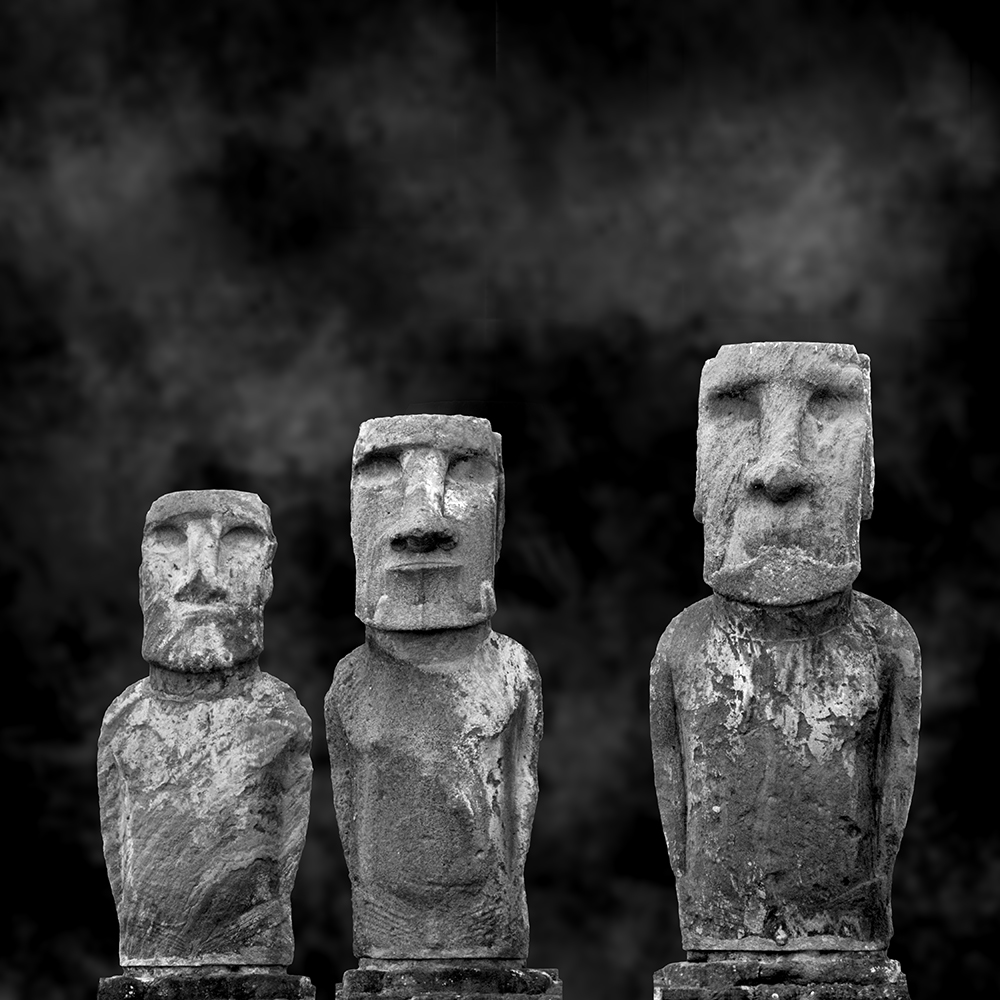

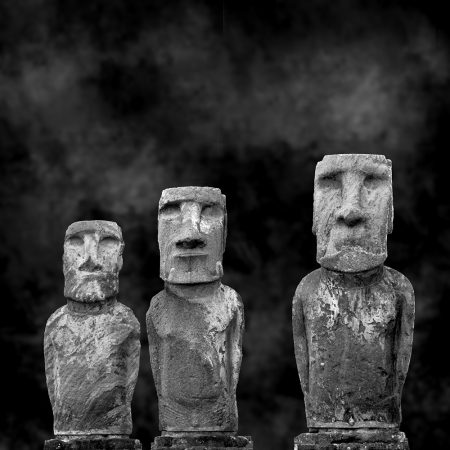
When I look at other photographer’s work I sometimes get discouraged. I’ll see an incredible shot, taken at a place I’ve visited before and wonder why I didn’t see it. I may see a great new technique and wonder why I didn’t have the vision to think of that. There will be a fantastic new portfolio on a familiar subject and I’ll wonder why I hadn’t see its potential.
In other words: I sometimes compare my work to others and become unhappy with my work and progress.
Do you ever feel that way? I suspect that we all do this sometimes: compare our work to someone else’s, or worse, compare our work to everyone else’s! It’s good for me to periodically remind myself of a few things (and that’s why I write all of these blogs);
First, creating art is not a competition, someone does not have to lose for someone else to win. Unlike much of life, we can all win if we create images that bring about personal satisfaction.
Second, it’s not realistic for a photographer to be great in all things. I am not going to be a great street photographer AND a great portrait photographer AND a great landscape photographer AND a great photojournalist AND a great abstract photographer. So comparing myself to all of these other photographers is just silly and frustrating! We can be great, but not in everything, and our goal should be to find what we are great in.
Third, please yourself. Comparing, in photography or in life, is never very productive. You cannot look to external standards, whether it be others work or their opinions, to find personal satisfaction. You must be comfortable with yourself and your art to find satisfaction.
Don’t compare your work or yourself to others, it’s not needed and no good will ever come from it.
Cole
June 15, 2011
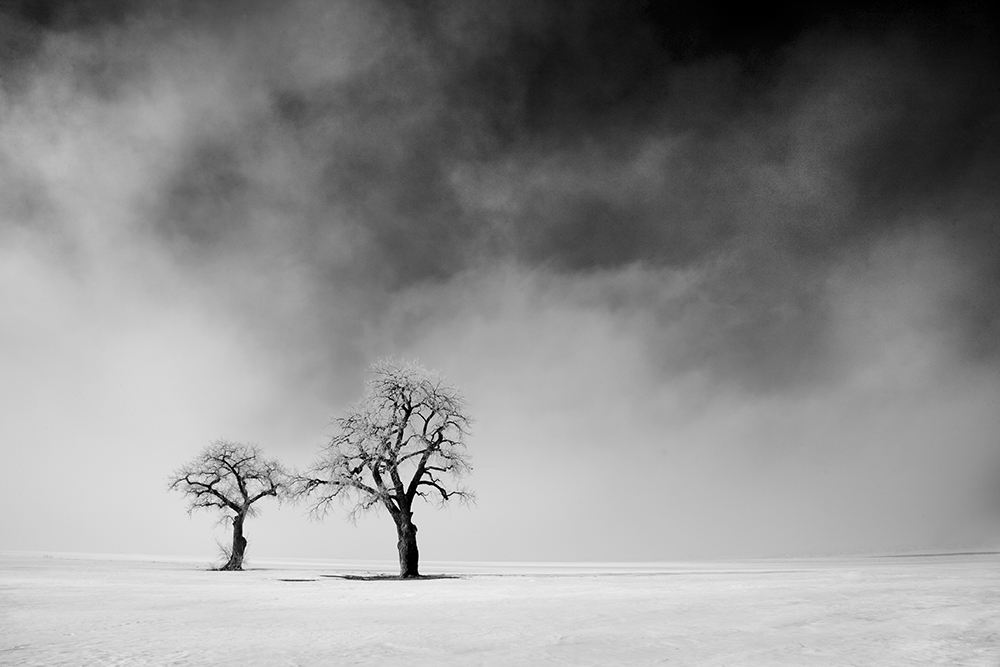
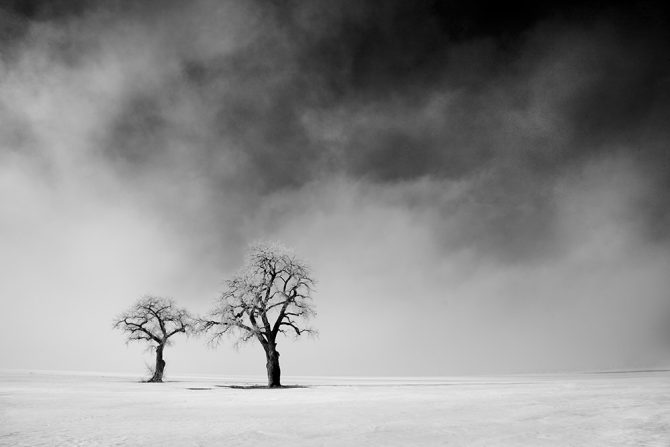
See my new video: “Trees“
Or see the images at: https://colethompsonphotography.com/portfolios/collections/trees/
I do enjoy working on portfolios, or cohesive bodies of work. There is something very satisfying about looking at your images on one subject, and see how the arrangement itself can become a new piece of art.
I know several people who have done the “photo a day” project and chose to focus on just one subject for an entire year. I think that’s a fun idea and my guess is that you’d create a very exciting portfolio!
Cole
June 1, 2011
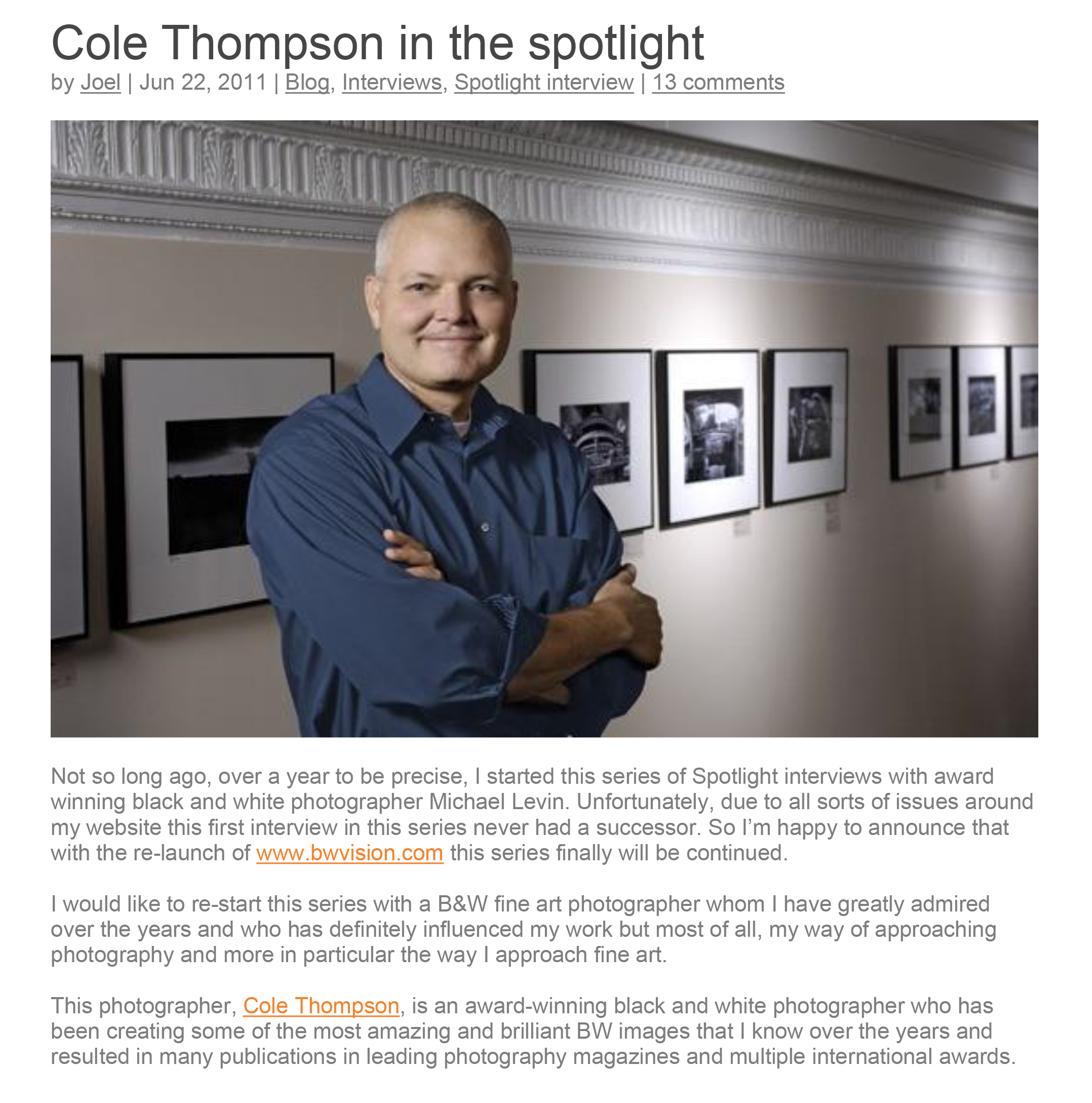
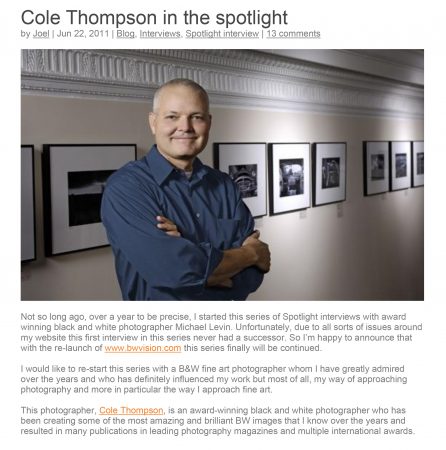
I don’t know if you’re familiar with Joel Tjintjelaar, but he’s a good friend of mine from the Netherlands. He’s also an amazing B&W photographer AND owns and runs BWVision.com. Joel is really busy!
Joel just interviewed me for his blog and you can read it here: BWVision Interview with Cole Thompson
You’ll want to keep an eye on BWVision.com over the next several weeks.
Cole
P.S. This is an image from my trip to Hawaii last week. A few more to come in my next newsletter.
May 26, 2011



I walk to lunch, I’m checking email.
I wait to cross a street and lookup the weather on my phone.
I stand in line to order, I’m answering someone on Facebook.
I wait for my food to arrive, I read an article.
I walk back to work, reading my iPad.
My head is always down.
Am I looking, am I seeing?
If I do not look, I do not see. If I do not see, I receive no inspiration.
Is my head down too much?
May 17, 2011


I was reading how the movie “The Beaver” with Mel Gibson and Jodie Foster (director) failed miserably at the box office. The article talked about Jodi Foster’s faith in the film and it’s message, and when asked about the financial disaster said:
“I’ve learned … that if you gauge your self-worth at the box office, you will be a very sorry person.“
How do I , as an artist, gauge my self worth? Do I base it on sales, reviews of my work, the galleries I’m in, the price of my work, how many important people like my images and the awards I receive? Is it possible to be feel successful and not achieve all of these accolades?
External success is a fickle mistress; she may love you one day and not even know you exist another. You’ll never really know her, for her standards change frequently and she’s always looking for her next new lover. To measure success by her standards can lead to an insecure existence and frustration as you try to win her love back by creating work that you hope will please her.
For me, art is an expression of the heart and only one opinion matters; mine. It is my creation and if I love it, then it doesn’t matter what another thinks of it. Success is a internal standard that must be met before any external measures matter. Please do not misunderstand, I still enjoy showing my work, exhibiting it and I do gain pleasure when others like it. But these are not the reasons why I create and those things are not necessary for me to feel good about my work or myself.
Perhaps my resume says it best (https://colethompsonphotography.com/Resume.htm):
Resume:
My art has appeared in numerous exhibitions and publications, and has received numerous awards. And yet my resume does not list those accomplishments, why?
In the past I’ve considered those accolades as the evidence of my success, but I now think differently. My success is no longer measured by the length of my resume, but rather by how I feel about the art that I create.
While I do enjoy exhibiting, seeing my work published and meeting people who appreciate my art, this is an extra benefit of creating, but this is not success itself.
I believe that the best success is achieved internally, not externally.

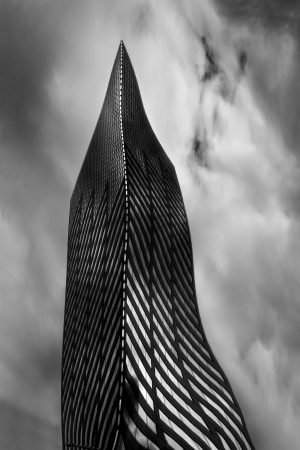
One of the reasons that I’ve been pursuing my recent portfolio entitled The Fountainhead is because I love the philosophy of the novel by the same name. I create these images to honor one of the core principles illustrated in the book; achieving success on one’s own terms.
This has been a perfect project for this purpose because in truth people have not been that enamored with my new images and they may never obtain much exposure, fame or fortune.
But that’s okay! I love these images and have had a wonderful time creating them. And I feel very lucky when I do come across another who appreciates the series because they share my love of architecture or because they can relate to the message of The Fountainhead. For me, this is success.
One of my favorite quotes from The Fountainhead serves as my artist statement for this series. This is an exchange between the main character Howard Roarke who is a young architectural student, and the College Dean who has expelled him for not conforming to the design standards of the day:
- College Dean: My dear fellow, who will let you? (design buildings)
- Howard Roarke: That’s not the point. The point is, who will stop me?
Who can stop me from achieving my own idea of success? No one can.
Cole
April 21, 2011
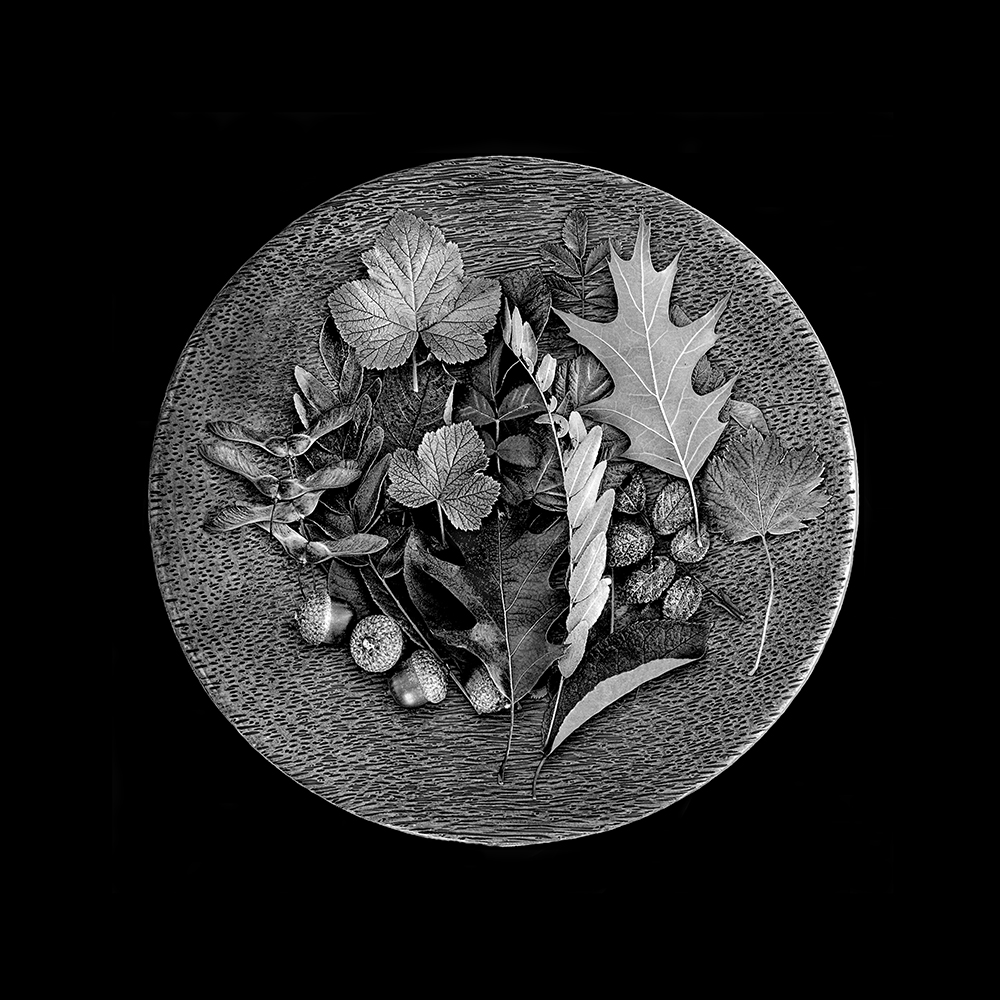


Cannot get out to create because of the weather? Only have a little time? Try photographing the objects in and around your home.
That’s that Paul Caponigro did when confined to his home due to illness. He turned to the common objects from around his home and yard. The images are stunning and may never have been created if it were not for his illness.
The image above is one that I created on a rainy day, using leaves and nuts from the yard and using available light. I’ll use whatever is at hand such as a dried dandelion, a house plant, a dahlia or a violin. Sometimes the results are predictably routine and sometimes they are special. That’s the fun of trying something new and different, you never know what you’ll find!
It is my belief that there are great images everywhere, if only we can see them.
Cole
April 9, 2011


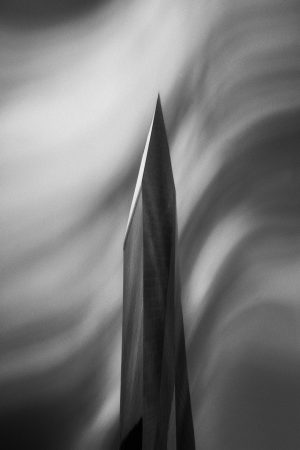
I just hate it when I keep learning the same lesson over and over again; or in other words I keep making the same mistake over and over again!
